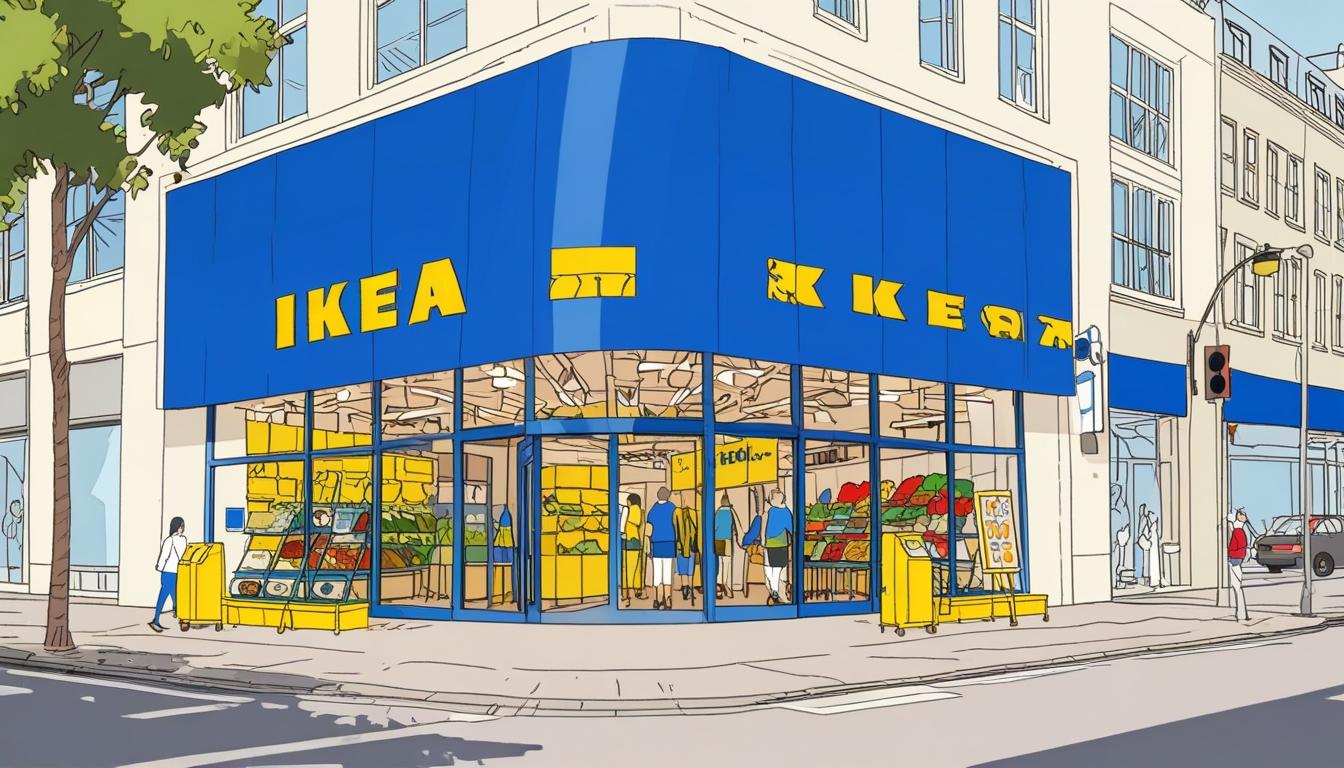Ikea has officially opened its doors at 214 Oxford Street, London, on 1 May, marking a significant new chapter for the Swedish home furnishings giant, traditionally associated with out-of-town locations. The flagship store occupies the former site of Topshop, a name lingering in the memories of British millennials. This move is part of Ikea's broader strategy to revive its brand presence in a rapidly changing retail landscape.
The store's launch comes after a series of promotional campaigns that have piqued public interest. Notably, an eye-catching blue bag billboard created by advertising agency Mother, which stood prominently for almost two years, and the recent pop-up shrine, Hus of Frakta, to iconic products, hinted at strong customer enthusiasm for the new outlet.
Ikea faces the challenge of captivating a diverse audience in central London, attracting busy office workers, local residents, and tourists alike. "The most important thing for us was connecting to London," a representative of Ikea noted, suggesting that the design and strategy of the new store are integral to achieving this connection.
Upon entering the store, visitors are greeted with a distinct shopping environment, diverging from the typical sprawling suburban layout. Instead, the design caters to the realities of urban living, offering a carefully curated shopping experience that is both functional and engaging. One of the immediate attractions is the Swedish Deli, where customers can indulge in Ikea’s famous fare, such as 85p hotdogs and meatball meals priced under £5, making it a competitive lunch option amidst the city’s eateries.
Additionally, the store features a Live Studio which serves as a platform for product launches, demonstrations, and guest appearances. Content from these events will be shared both in-person and via Ikea’s social media channels. The initiative aims to engage customers actively and provide a reason for repeat visits.
Dynamic activations include branded story-writing challenges and origami workshops within the children’s section, as well as food and beverage tastings in kitchen showrooms. This approach mirrors successful strategies implemented by nearby retailers like Selfridges, aiming to transform the store into a cultural hub rather than a mere shopping destination.
In a bid to appeal to tourists, the deli menu boasts exclusive items such as fish and chips, alongside limited-edition merchandise like bucket hats. Unique photo opportunities, such as posing with an oversized meatball against famous London landmarks, encourage visitors to capture their experience, enhancing the store's visibility in their holiday memories.
The layout of the store is designed to inspire Londoners with realistic room settings tailored by local designers, addressing practical living solutions that resonate with the everyday challenges of city dwellers. The concept of "culture clusters" further showcases Ikea’s commitment to collaboration with local artists, enhancing the space with visual and auditory elements that reflect London's rich diversity.
Sensory experiences, such as the comforting scent of baking wafting through the air, enhance the ambience, making the store feel like a part of the city rather than an isolated retail outlet. This thoughtful approach aims to foster authentic connections with urban consumers by blending functionality with emotional resonance.
Throughout its history, Ikea has transcended the conventional retail experience. It has evolved into a destination where customers don’t just shop, but engage in a multifaceted journey. This hallmark of Ikea’s brand identity is preserved in the new Oxford Street store, which offers a curated experience that balances familiar elements with fresh innovations.
As it settles into its new location, Ikea's Oxford Street flagship aims to deliver a unique blend of the functional and the novel, catering to the diverse needs of its varied clientele, and establishing itself as a vibrant part of London's retail landscape.
Source: Noah Wire Services
